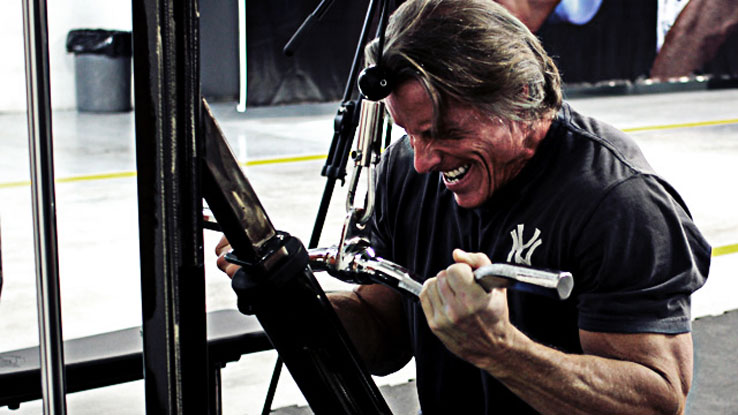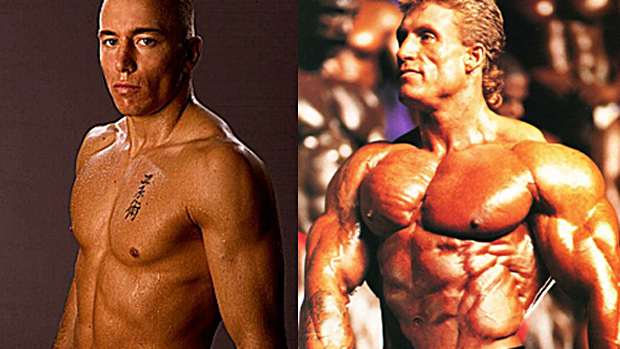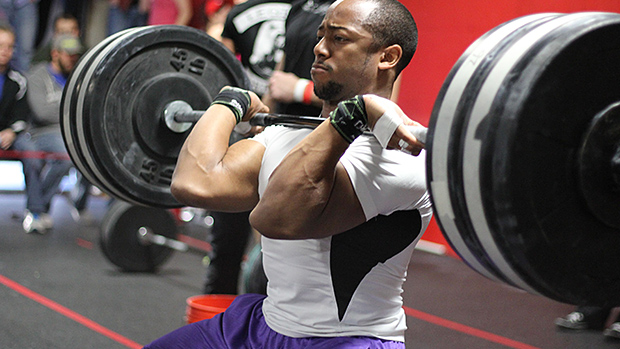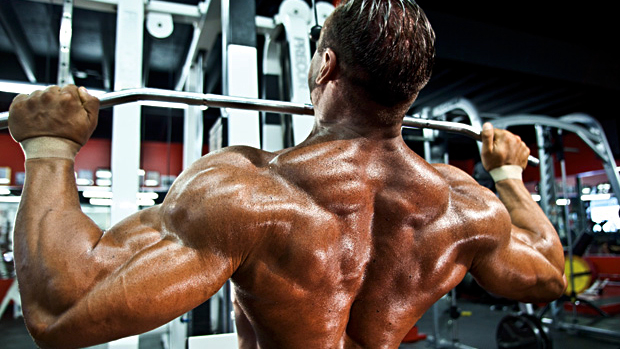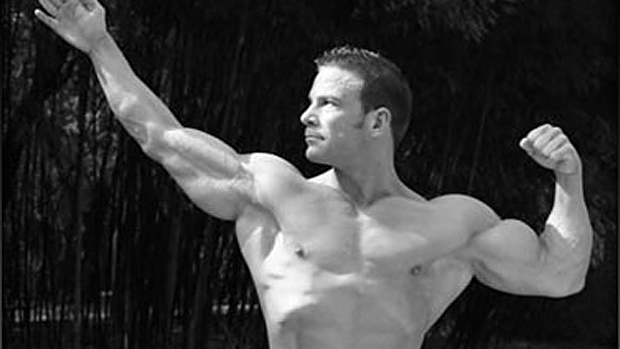There's nothing worse than being banged up or injured, and unable to lift heavy.
I've been there, and I've trained clients who've been there. I've built a name as the "corrective exercise" guy; the guy that nobody likes to hear from unless they're injured and looking for a way to train.
This first edition of "Train Around Pain" will examine some common areas of pain in the upper body and what you can do to train around them while laying a better foundation for future training.
First, a cautionary note: Just because the title of this article is "Train Around Pain," doesn't mean that you should ignore it. Pain is a great warning sign. Something is wrong, and you need to do something about it.
Imagine every time you take your car out on the highway and get it over 60 mph it starts chugging, wheezing, and generally acting flaky. So you take it in, and the technician says to give it two weeks off and then see how it goes.
Can you see the irony here? How many docs tell you to take two weeks off, as if that will magically cure what ails you?
It doesn't. If you know that every time you take your car over 60, something bad happens, you take it in and get it fixed! You should take the same approach with your body.
While I'm going to give you some solid strategies to work around pain, it's up to you to determine why you developed that pain to begin with, and to come up with a game plan to put the kibosh on it.
About two years into my powerlifting career, I'd been training hard for six months straight and decided to take a full week off from the gym.
One of my favorite past times growing up was playing basketball, so I decided I'd just shoot hoops for a week to stay active and get my mind off the heavy iron.
Being the OCD type that I am, I probably took a thousand shots that week and really did a number on my wrist. I literally couldn't bend my wrist at all for close to two weeks!
Fortunately, it taught me how to effectively train around wrist pain. If you're suffering from a wrist-related issue, here are a bunch of ideas to fix it up and train around it.
SMR, Massage, and Stretch Your Wrist Flexors and Extensors
It's amazing how beat-up the wrist flexors can get.
Whether it's sitting and typing at a computer, repetitive gripping tasks, or picking up heavy things and putting them back down, the forearms (and especially the wrist flexors) take a beating.
For many, just getting underneath a bar to execute a clean-grip front squat makes their forearms feel like they're going to explode.
To remedy this, you can SMR (Self Myofascial Release) the area with a tennis ball or stick, static stretch it, or get a qualified soft-tissue therapist to work on the area with their hands.
Use the Safety Bar for Everything
Being a powerlifter, it pained me not to be doing squats for an extended period.
However, this allowed me to get acquainted with what would quickly become my biggest ally: the safety squat bar.
I used the safety bar for virtually every lower body lift that I could. Free squats, box squats, good mornings, lunges, and split-squats were all in my routine.
The biggest benefits you get from the safety bar are strengthening of the core and torso, coupled with an unrelenting stress on your upper back. Quite simply, you have to learn to extend your t-spine when you squat with a safety bar.
If you don't have a safety squat bar, you can try front squatting with a bodybuilder style cross-grip, but honestly, the SSB is the best thing out there if you have an upper extremity injury.
I've learned a lot about elbow pain from one of my trainers at IFAST, Wayne Simmons. Many of you reading this would love to have Wayne's physique, and the guy is 51 years old!
Back in the day Wayne had elbow surgery, and he's lacked full extension ever since. As a result, I've learned a thing or two about elbow pain from watching him train, along with several other clients we've worked with over the years.
Traction the Joint
Traction is a great option here. It helps decompress the joint, which feels fantastic, especially if it's arthritic.
SMR Your T-Spine, Pecs and Lats
If you suffer from elbow pain, stop focusing only on the elbow! Sure, that's where it hurts, but often elbow pain is a direct result of injured issues further up the kinetic chain.
For example, if you have poor t-spine extensibility, pec or lat length, etc., you're going to struggle getting into external rotation at the shoulder. This might not be a big deal – until you try to throw a bar on your back to squat or press a barbell overhead!
If you lack motion up top, the elbow will do its best to compensate. That may work for a while, but not forever. If you have elbow pain, foam roll and mobilize the heck out of your thoracic spine, pecs, and lats. If you can get some ART or massage on the areas, go for it.
Quite simply, the better you move through your upper back and shoulders, the better your elbows are going to feel.
Ditch the Barbell
It pains me to say this, but a lot of guys that have crappy elbows need to ditch the barbell, at least for a while.
A while back I remember Jason Ferrugia saying something along these lines:
"Extend your arms straight out in front of your body. Turn both palms as far towards the ceiling as you can.
See the difference in rotation? That's why you need to ditch the barbell."
It's a bit of a paraphrase, but you get the point. Furthermore, if you have shoulder motion asymmetries and then use a barbell where you're locked into a set movement pattern, you're even more likely to have issues.
Simply switching to dumbbell variations of your favorite exercises can go a long way towards keeping those elbows healthy.
Ditch the Single-Joint Exercises
If the last point made you angry, this one may force you to revoke my man-card permanently.
Even though the elbow is a hinge joint, that doesn't mean kickbacks, skullcrushers, and biceps curls are going to be a great idea.
Here's a quote from Eric Cressey that really rings true with me:
"The knee is the joint most similar to the elbow, yet it's much bigger than the elbow, yet nobody contraindicates 4-5 elbow extension-only exercises per week in many routines as being inappropriate – or even excessive.
"If you want to build big legs, you squat, deadlift, and lunge. If you want to build big triceps, you bench, do weighted push-ups, overhead press, and do dips. The absolute load is higher, but the stress is shared over multiple joints.
"In just about every instance, when you drop the direct elbow extension work from someone's program, their elbow issues resolve very quickly and they don't miss a beat with training."
Often, getting rid of the isolative stuff improves elbow health and function immeasurably. And if you're going to keep the isolation work in, try using a fat grip attachment (such as the Grip Force grippers) to take some of the stress off the elbows.
Justine Ware, one of my best friends when I was powerlifting at Ball State, had shoulder pain all the time. I can't remember one bench press workout where this guy didn't have pain.
As I got older and learned a thing or two about training, we figured out that he was impinging like crazy. The low-level stuff like external rotations and balancing his presses with pulls made a difference, but it took a much broader approach to get him from feeling okay to feeling 100% pain-free.
We needed to take drastic measures.
Switch to an Upper Back Specialization Routine
I can't tell you how many times I've dealt with someone that has a shoulder impingement (or a pec strain), and when I put them on a program with copious upper back work, they come out on the back-end stronger and more resilient.
Even if you aren't a bodybuilder, almost anyone can benefit from a dedicated month or two of focusing on the upper back.
In each session, I like to get at least one of the following exercise variations in:
- a vertical pulling variation (chin-up, pull-up, lat pulldown, etc.)
- a horizontal pulling variation (DB row, chest supported row, bent-over row, inverted row, etc.)
- a face pull variation
This way, we're literally hitting the upper back from numerous planes and angles, helping ensure maximal development.
And regarding chinning, I can't stress highly enough how important it is to do them correctly! Here's an instructional video to help:
Master the Y-T-I series
At the Learn to Train seminar in November of 2010, I was assessing Jo Jordan, a 650-pound bench presser.
After running him through a screen to determine the strength of his scapular stabilizers, I found his strength wasn't up to snuff – especially considering the strength in his pressing muscles!
Low-level exercises like Y's, T's and I's are great because they allow you to isolate and feel the small muscles of your mid-back – specifically, the middle and lower trapezius.
When I started working with Justin, this was a cornerstone for his program, and we put them in both pre and post-workout.
What's impressive here is when coupled with the upper back work outlined above, his posture improved and his back was noticeably thicker and fuller in less than two months.
Foam Roll T-Spine, Pecs, Lats
Just like we often need strength for the upper back, we often need to loosen up the muscles on the front to regain structural balance.
To do this, start every session by foam rolling your thoracic spine, pecs, and lats. Starting to see a theme?
Basically, if you have an upper body injury, foam roll your t-spine, pecs and lats as a starting point. Chances are, you'll feel better as a result.
Master the Push Up
Many lifters assume that push-ups are just a weak man's bench press.
However, the biggest benefit of using push-ups in lieu of bench presses is that you can actively protract your scapulae, which develops the serratus anterior.
Other than just looking cool on a shredded bodybuilder, the serratus is critical for proper overhead function. In this case, the serratus anterior, upper traps, and lower traps work in unison to upwardly rotate the scapulae and keep you from impinging.
Furthermore, most of us have spent 10x as much time bench pressing as we have working on our push-ups, so the serratus is typically weak and underdeveloped in comparison.
Switch To the Front Squat
There was a time when I thought I was tough because I powerlifted and back squatted a decent amount of weight. It was all fun and games until I realized that my mobility and core strength sucked, and that a cycle or two of front squats would probably do me some good.
It quickly turned into a love-hate relationship: loving the results, but hating the exercise!
If you're suffering from an impingement, the front squat keeps you away from that abducted/externally rotated shoulder position that wreaks havoc on many powerlifters. Often I'll have my lifters use front squats for a cycle or two, while simultaneously working to bring up their shoulder and t-spine mobility.
Another option is using the safety squat bar for a cycle or two, but the front squat will make a man (or woman) out of all of us.
A/C Joint Issues
Over the years I've helped numerous clients work around A/C joint issues, and they can definitely be tricky.
Here are some tried and true tactics to get things back to normal and allow that A/C joint some time to rest.
Switch to Overhead Pressing and Vertical Pulling
Anyone with a cranky A/C joint can tell you that horizontal presses like bench pressing and even push-ups can be quite uncomfortable.
On the flip side, however, vertical pressing and pulling usually feel okay and cause them no issues.
Row Right
While horizontal pressing and pulling can cause pain in and around the A/C joint, I feel that rowing is still all right – as long as you're performing your rows correctly.
What you'll typically see is that instead of actually rowing and retracting the scapulae, people with A/C joint pain move excessively through their shoulder. They substitute retraction at the scapulae for a gliding forward of the humerus. Shirley Sahrmann calls this anterior humeral glide.
If you get A/C joint pain when rowing, you're probably not doing it right. Cut the weight in half, and focus solely on moving through the shoulder blades.
Switch to Back Squats
As great as fronts squats are for someone suffering from a shoulder impingement, they're horrible for someone suffering from A/C joint pain.
The compression and stress the barbell places on the joint is a surefire way to piss it off further and set you back in your training.
If you're used to front squatting, give back squats a go for the next month or two. You'll probably enjoy the bump in your training numbers, and your A/C joint will benefit from some dedicated time off.
Injuries – they're as much a part of lifting heavy as plates and barbells. But that doesn't mean you should let them derail your training goals or worse, send you off on an early retirement.
Give some of these upper body tips and strategies a shot. Your upper body will thank you! As for the lower body, well, for that you'll have to wait for the next installment.

